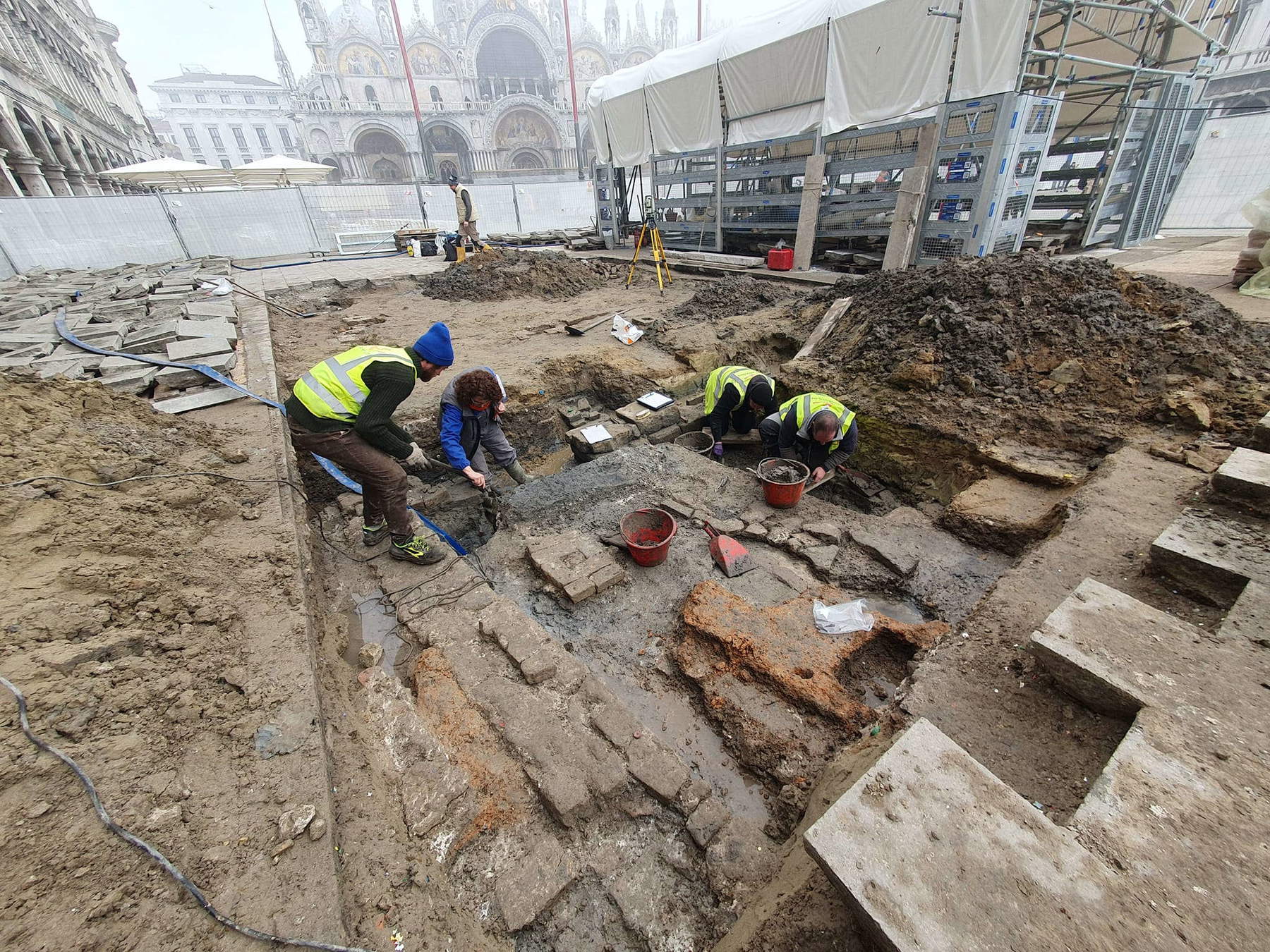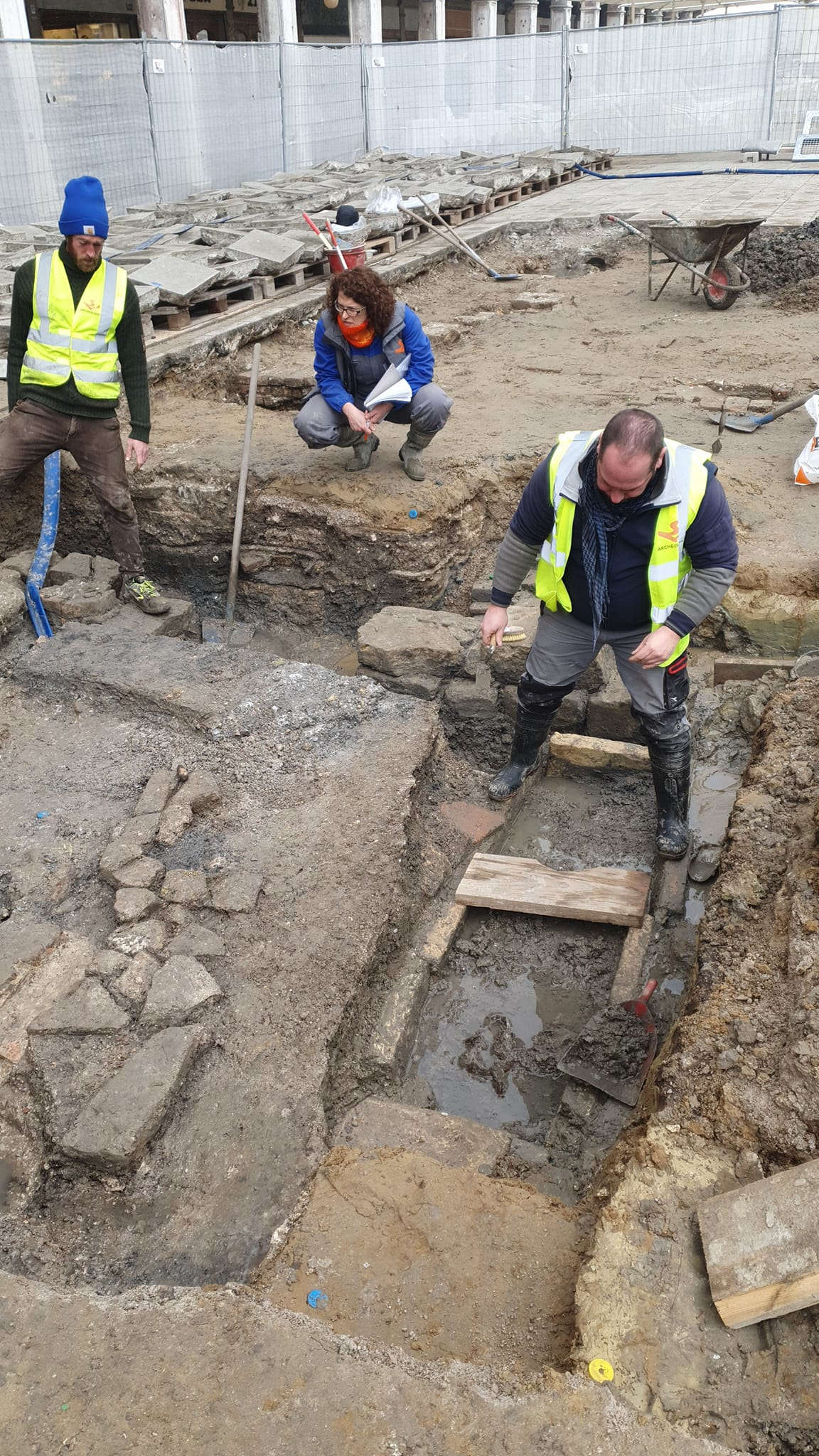Surprises are coming from archaeological excavations in St. Mark’s Square in Venice, opened as part of the sites for the restoration of the masegni, or stone slabs used to pave the square. The excavations, carried out by the company Semper s.r.l. and supervised by the Venice Superintendency, under the guidance of Sara Bini, have uncovered a series of masonry and floor levels, presumably attributable to the ancient church of San Gemignano. This house of worship was located in the Marciana area in early medieval times, but over time its precise location had fallen into oblivion.
The hypothesis was formulated on the basis of archival sources mentioning the presence of the church in this area of the square, and thanks to the recent discovery, right in St. Mark’s Square, of a burial containing at least four individuals, in addition to the aforementioned masonry. In antiquity, it was customary to bury the dead near houses of worship, sometimes even in collective graves. Considering that the sources at this point mention only the church of San Gemignano, and cemeteries were often associated with the surrounding buildings of worship, it is plausible to assume that the Superintendence’s essay allowed the identification of the structures and floors of the church itself. This makes it possible to investigate, at least in part, one of the oldest cult buildings in Venice, existing long before the construction of St. Mark’s Basilica and before the square took on its current configuration, surrounded by the Procuratie.




The superintendency also expresses special thanks ... to Federico Berchet and Giacomo Boni, who conducted similar excavations between 1885 and 1889, identifying some wall structures at this point in the Piazza, but without being able to interpret them historically. Thanks to the accuracy of the plan of Berchet’s excavations, the Soprintendenza was able to bring them to light and, with the help of the most advanced contemporary excavation methodologies, to formulate these hypotheses. The various soundings carried out in other parts of the Piazza have also made it possible to examine and study numerous pavement layers that had never been previously identified, evidence of the constant restoration and remodeling of the Marcian area over the centuries.
St. Mark’s Square did not always look as it does today; it was considerably different, with canals running through it and churches characterizing it. Thanks to these archaeological excavations, funded by the Ministry of Culture and carried out in collaboration with the City of Venice, which is overseeing the restoration of the masegni, the Venice Superintendency will have a larger body of data. After careful analysis of post-excavation documentation, examination of archival sources and the use of digital reconstruction techniques available to historical-archaeological research, it will be easier to understand not only the evolution but also the origin of the square.
 |
| Surprise in Venice: ancient tomb found under St. Mark's Square! |
Warning: the translation into English of the original Italian article was created using automatic tools. We undertake to review all articles, but we do not guarantee the total absence of inaccuracies in the translation due to the program. You can find the original by clicking on the ITA button. If you find any mistake,please contact us.